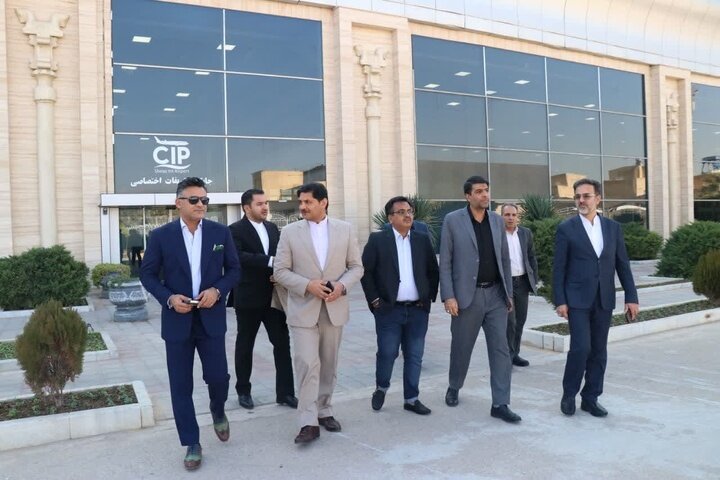Pakistani minister visits Shiraz, emphasizes medical tourism cooperation

TEHRAN – Syed Sardar Ali Shah, Pakistan’s Provincial Minister of Sindh for Education, Culture, Tourism, and Antiquities and Archives, arrived at Shiraz on Thursday morning, to attend a major tourism fair being underway in the ancient Iranian city.
The minister was warmly welcomed by Fars province’s tourism chief Mohammad Sabet Eqlidi, who highlighted the historical and cultural ties between the two neighboring countries, underlining the significant geographical proximity and cultural exchanges.
Sabet Eqlidi emphasized the substantial historical, cultural, natural, and religious potential of Fars, citing it as a destination that could attract Pakistani tourists and expressed hope for more substantial bilateral commercial relations between the two nations.
Highlighting Shiraz’s capacity in medical tourism, Sabet Eqlidi extended an invitation for familiarization tours and visits to medical facilities for Pakistani tourism operators. He underlined Shiraz’s potential for hosting medical tourists.
Expressing solidarity over the tragic terrorist incident (which happened on Wednesday) in Kerman, the Pakistani Minister extended condolences to the Iranian people and expressed a desire to strengthen tourism ties between the two nations. He emphasized a keen interest in bilateral agreements encompassing tourism, sports, and culture.
Ali Shah expressed eagerness to visit and pay homage to historical and cultural sites, particularly the revered Shah Cheragh shrine. He also mentioned a cultural library focused on Iran in Karachi and expressed willingness to facilitate Iranian youth engagement through such centers.
Moreover, the minister offered collaboration opportunities with Pakistan’s 300 medical facilities and extended an official invitation to Fars’ medical team to explore Pakistan’s medical capacities.
The visit signals a growing interest in fostering cultural ties and exploring avenues for mutual collaboration, especially in the tourism and healthcare sectors, between Iran and Pakistan.
The ancient region of Fars, also spelled Pars, or Persis, was the heart of the Achaemenian Empire (550–330 BC), which was founded by Cyrus the Great and had its capital in Pasargadae. Darius I the Great moved the capital to nearby Persepolis in the late 6th or early 5th century BC.
Celebrated as the heartland of Persian culture for over 2000 years, the capital city of Shiraz has become synonymous with education, nightingales, poetry, and crafts skills passed down from generation to generation. It was one of the most important cities in the medieval Islamic world and was the Iranian capital during the Zand dynasty from 1751 to 1794. Moreover, Shiraz is home to some of the country’s most magnificent buildings and sights. Increasingly, it draws more and more foreign and domestic sightseers flocking to this provincial capital.
Afif-Abad Garden, the Tomb of Hafez, the Tomb of Sa’di, Jameh Mosque of Atigh, and Persepolis are among the historical, cultural, and ancient sites of Shiraz that are of interest to domestic and foreign tourists. The ancient city is also home to some magnificent historical gardens, such as Bagh-e Narenjestan and Eram Garden, which are top tourist destinations both for domestic and international sightseers.
AFM
